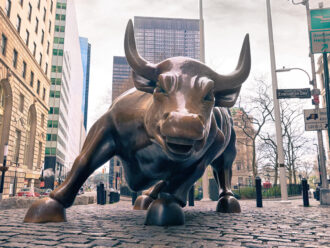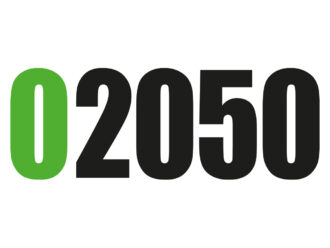With the Federal Reserve keeping its cards close to its chest and the Bank of England waiting its turn before raising interest rates, investors are being advised to hedge. Emma Cusworth reports.
“If the Fed delays an interest rate increase beyond December there will need to be a very clear and sound reason for their decision. Markets have been pricing in an interest rate increase all year, which has caused indecision and ambiguity.”
Nicholas Ebisch
UK institutional investors are in need of some respite from the super-low interest rate environment as low levels of interest rate hedging continues to negatively impact funding levels. However, with the Federal Reserve entering a holding pattern and the Bank of England (BoE) unlikely to raise ahead of the US, UK institutions have more uncertainty and volatility to look forward to before a rate hike comes. As a result they are now being advised to increase their interest rate hedging.
The latest figures from the JLT DB monthly pension funding update show that UK pension fund deficits deteriorated significantly over the last year. In the 12 months to the end of June 2015, FTSE 100 and 350 companies’ deficits grew around 32% each to £78bn and £90bn respectively, while all UK private sector pension scheme deficits nearly doubled, growing 45% to £253bn. Assets increased across all three categories, but the growth in liabilities more than offset those gains, increasing roughly 7% for FTSE 100 and FTSE 350 companies to £614bn and £696bn respectively, while all UK private sector pension scheme liabilities rose more than 10% to £1477bn.
The volatility in funding levels shows “a lack of hedging practice and understanding”, according to JLT senior investment consultant Aniket Bhaduri, who believes that although the BoE has signalled rates will need to increase before long, which would provide much needed relief to institutional investors, a rise in the UK is unlikely to arrive before the Fed increases rates in the US.
FOLLOWING THE FED
Although there is no technical link between rates in the UK and those in the US, developments in US interest rates are likely to be a key leading indicator of when UK institutions could start to see some relief at home.
The BoE is by no means restricted from hiking ahead of the Fed and governor Mark Carney is clearly keen to demonstrate that it will not simply mirror its US brother. At the Jackson Hole Economic Policy Symposium in August, Carney said: “Domestic economic conditions – conditions affected by domestic monetary policy – still very much matter… US policy is not the sole determinant of global rates.”
But the UK is not likely to be ready for a hike before the US. According to Christopher Vecchio, strategist at DailyFX, given incoming UK economic data, “there doesn’t seem to be any reason for the BoE to raise rates before the Fed, and so it may just occur that the BoE waits for the Fed to hike before it does so on its own”.
Headline inflation in the UK fell to -0.1% year-on-year to September 2015, and the core rate is hovering at +1.0% year-on-year, Vecchio points out. “Neither reading screams ‘rate hike’, and until the Fed sees the conditions for a rate hike, it’s unlikely that the BoE does either,” he adds.
Since the Fed delayed the ‘lift-off’ in interest rates, which had been widely expected to begin in September, markets have pushed back expectations for a rate hike sharply.
According to analysis from ETF Securities, Fed fund futures market implied probabilities as of 21 October show March 2016 as the most likely point for a lift-off in US rates, with 55% probability.
Some commentators believe the likelihood of a December hike is being underestimated by the markets, while DailyFX’s Vecchio believes somewhere between March-July 2016 seems the most likely period for the Fed to raise rates.
UK RATE HIKES
The Fed is not the only central bank player to influence UK rates, though. sterling exchange rates play an important role in when the BoE will be able to start hiking, which means the European Central Bank, and it’s continued policy of monetary easing will also be a key influence.
The currency is becoming increasingly important in the UK’s interest rate decisions. Trade-weighted sterling has appreciated significantly over the last several years and the bank “is rightly worried” about the impact this will have on lowering inflation and hurting export activity, according to Luke Bartholomew, investment manager, fixed income, EMEA, Aberdeen Asset Management. “If, as we expect, the ECB eases policy further and this puts more downward pressure on the currency it may encourage the BoE to be even more cautious,” he says.
The first UK rate hike is currently not fully priced in by the market until 2017, which in the view of Marilyn Watson, head of global unconstrained product strategy, in Blackrock’s international fixed income business, is “too far away, despite low core inflation and a negative reading for September’s headline CPI release”.
“Our view is based on the UK’s overall ongoing positive fundamental profile,” she says. “Labour market data in terms of employment growth and the unemployment rate remains strong, with wage growth in recent months also modestly improving. While we do not believe that the Bank of England will raise rates before the Fed, we view the lag priced in by the market as excessive. The Bank of England’s November Inflation Report should provide further clues about the expected timing of the MPC’s rate normalisation commencement.”
PREPARE FOR VOLATILITY
Since the Fed delayed the start of its hiking, markets show far less consensus on their view of when lift-off will occur.
Four months ago markets were implying a probability of over 50% for a rate hike by October 2015, over 70% by December and nearly 90% for a rate hike by March 2016. By mid-October those figures had fallen considerably with the implied probabilities of hikes before December and March falling to around 35% and 60% respectively, based on analysis from ETF Securities.
In part this is because the market’s ability to navigate forward guidance is decreasing, but investors should beware that less certainty is likely to lead to greater volatility around key points in central bank calendars, and particularly around key inflection points where rates change.
According to Caxton FX analyst Nicholas Ebisch: “If the Fed delays an interest rate increase beyond their December meeting, there will need to be a very clear and sound reason for this decision. Markets have been pricing in a Fed interest rate increase all year, which has adversely affected emerging markets and caused indecision and ambiguity in financial markets. Further vagueness from the Fed will mean more volatility, uncertainty and speculation in the currency markets, which could be a big risk for the global economy.”
OPTIMISTIC VIEW
Markets are currently pricing a much slower start and more gradual path to rate normalisation than the Fed’s own predictions suggest, creating a mismatch in expectations and increasing the chance of volatility.
“There is a big disconnect of around 1% in where the long-term policy rate will be and the biggest optimists have been the Fed,” Aon Hewitt head of global asset allocation Tapan Datta says. Historically, markets have generally underestimated how fast and how quickly the Fed has raised rates, but because the central bank has been on the wrong side of the bet in the last year, repeatedly lowering their projections, he believes markets are “gambling” on the Fed being wrong this time. “It is an interesting stand-off,” he says.
Neil Williams, group chief economist at Hermes Investment Management, warns: “With money markets effectively writing off a (US) rate hike before summer 2016, they are currently looking complacent and could react if the Fed touches the brake sooner.”
The market is clearly not pricing in a December rate hike, so if the Fed goes ahead and hikes rates there could be quite a bit of volatility.
“We think it is too early to tell who is right or wrong because the next two non-farm payroll reports will be very important in the Fed’s decision-making,” says Wouter Sturkenboom, senior investment strategist at Russell Investments. “If payrolls stay low at 140k we expect the Fed to delay, but if payrolls bounce back to 180k we expect it to hike.”
TO HEDGE OR NOT TO HEDGE?
The advice from consultants given the environment of uncertainty around interest rates is for institutional investors to hedge their interest rate exposure.
“One of the most popular strategies is going into liability driven investment (LDI) products based on swaps or gilt repos to hedge, especially long-duration liabilities,” JLT’s Bhaduri says. “That also helps to free up capital to use in growth allocations.”
Aon Hewitt’s Datta says UK pension funds are generally coming from a “relatively unhedged position” and have taken too much interest rate risk. “It makes sense to hedge,” he says, “and investors should do so.”
However, hedging is not without its own challenges. The scale of demand for longdated inflation-linked gilts has been incredible as more and more investors have turned to LDI strategies. This is already pushing prices up and yields into negative territory as demand for those bonds becomes insensitive to risk. A rise in UK rates could therefore have little or no impact on the yields of long-dated inflation linked gilts.
“So while investors need to correctly size their interest rate risk, that doesn’t get around the conundrum that increased hedging activity is becoming a big factor in driving yields lower,” Datta says.
WHEN IS THE FED LIKELY TO START RAISING RATES?
– Neil Williams, Hermes Investment Management: “I have been expecting the first hike to come this December, and despite the cold wind from China, am still not ruling it out. In any case, with the US Fed set to move only in ‘baby steps’, expect another two years of negative real policy rates – on top of the five we’ve had – and an ultimate ‘peak rate’ much lower than we’re used to.”
– Nicholas Ebisch, Caxton FX: “The most likely answer to this question is to anticipate a December interest rate increase. Inflation data in the last few weeks has been disappointing, which is keeping the US dollar at a weak level. However, as investors have been preparing themselves for a rate increase for years, the Fed cannot keep postponing for longer periods of time, as they will eventually lose credibility.”
– Wouter Sturkenboom, Russell Investments: “We still think December is the most likely date for lift-off, although we fully acknowledge the risk around that view has increased after the last two non-farm payroll reports came in weaker than expected. If the Fed decides to wait beyond December before raising rates we are likely to see that first rate hike in Q2 2016 at the earliest because it would take some time for the data to confirm that the US economy is still on track.”
– Marilyn Watson, Blackrock: “While it is plausible that the Fed could raise rates by the end of the year, and there are a lot of important data releases between now and then, the market is now fully pricing the first hike closer to summer 2016 than December 2015. In our view, the balance of probability is tilting towards the Fed waiting for a few more data points, although we still think that there is insufficient risk premium priced into the front end of the US yield curve. Until the FOMC does pull the trigger, all eyes will remain keenly trained on growth, labour market and inflation data.”
– David Riley, BlueBay Asset Management: “In our opinion, the decision not to raise interest rates and the emphasis on below-target inflation and risks to global growth implies that the start of an interest rate hiking cycle has been deferred to at least the end of the year and quite possibly into 2016.”
– Josh McCallum, UBS Asset Management: “December is still on the table, but only just. It all depends on whether the employment cost index bounces back on 30 October.”




Comments